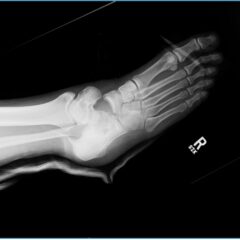High-Fidelity Simulation with Transvaginal Ultrasound in the Emergency Department
ABSTRACT:
Audience:
Intern and junior emergency medicine residents.
Introduction:
Abdominal pain and vaginal bleeding in the first trimester of pregnancy are common presentations to the emergency department (ED).1 Formal transvaginal ultrasound (TVUS) is considered the test of choice for evaluation of first trimester pregnancy due to its high sensitivity and specificity for identifying intrauterine and ectopic pregnancies.1 Additionally, TVUS can evaluate for various uterine and ovarian pathology as well as identify other non-gynecologic conditions and is within the scope of practice for the emergency physician.2 Given the emergent and time sensitive nature of certain obstetric and gynecologic conditions, formal transvaginal ultrasound imaging may not be feasible. A rapid assessment with transvaginal point-of-care ultrasound (TVPOCUS) can be utilized by emergency medicine physicians (EMP) to confirm intrauterine pregnancies (IUP) and identify any associated complications. There are multiple advantages to TVPOCUS including reduced cost and length of stay, patient satisfaction, and improved resource utilization.1,3Additionally, multiple studies demonstrate that EMPs can learn this skill and perform TVPOCUS accurately and safely.1,3 Developing the skills and comfort with TVPOCUS in a simulation setting during residency is beneficial and can have important implications in future practice.
Educational Objectives:
By the end of the session, learners should be able to 1) recognize the clinical indications for transvaginal ultrasound in the ED, 2) practice the insertion, orientation, and sweeping motions used to perform a TVPOCUS study, 3) interpret transvaginal ultrasound images showing an IUP or alternative pathologies, and 4) understand proper barrier, disinfection, and storage techniques for endocavitary probes.
Educational Methods:
This session included three high-fidelity simulation cases that allowed participants to utilize TVPOCUS in a safe and conducive environment. There was a total of 32 emergency medicine (EM) residents who participated. The simulation sessions were divided into two separate rooms and included four learners for each session that actively managed the patient, for a total of 12 active participants. The 20 remaining residents were observers. Participants learned evidence-based indications, performance, and interpretation of transvaginal ultrasound. Three cases were reviewed and included IUP, ruptured ectopic pregnancy with hemorrhagic shock, and appendicitis in pregnancy. The cases were followed by a debriefing session and discussion regarding the evidence behind bedside transvaginal ultrasound, its incorporation into EM workflow, and practice-based learning.
Research Methods:
The educational content and efficacy were evaluated by oral feedback in a debriefing session after the workshop. Additionally, pre-simulation and post-simulation surveys were sent to participants to assess prior ultrasound experience and confidence on the indications, performance, and interpretation of transvaginal ultrasound. Responses were collected using a Likert scale of 1 to 5, with 1 being “not at all confident” and 5 being “very confident.”
Results:
Ten learners responded to the survey consisting of EM residents in a three-year EM residency program. Prior to the workshop, the median reported confidence level across all questions was “1- not at all confident” for the PGY-1 class, and “3-neutral” for the PGY-2 and PGY-3 classes. Following the workshop, all median scores across all classes were “4-confident,” demonstrating an increase in confidence scoring across all measurements and participants. Incorporating transvaginal ultrasound into clinical workflow demonstrated the largest increase in confidence score (median 1.5 to 4), followed by insertion/orientation of the endocavitary probe (median 2.5 to 5).
Discussion:
This high-fidelity simulation familiarized learners with transvaginal ultrasound and how it can be appropriately utilized for a variety of high-yield clinical scenarios that present regularly to the ED. Given the variation in ultrasound training among residency programs, and the lack of specific simulation content addressing this modality, it is important to implement scenarios that improve learner comfort with TVPOCUS. Overall, this workshop resulted in an increase in confidence scores of participants in the indication, performance, and interpretation of TVPOCUS in the ED.
Topics:
Transvaginal ultrasound, POCUS, intrauterine pregnancy, ectopic pregnancy, hemorrhagic shock, appendicitis in pregnancy, abdominal pain, emergency medicine.

